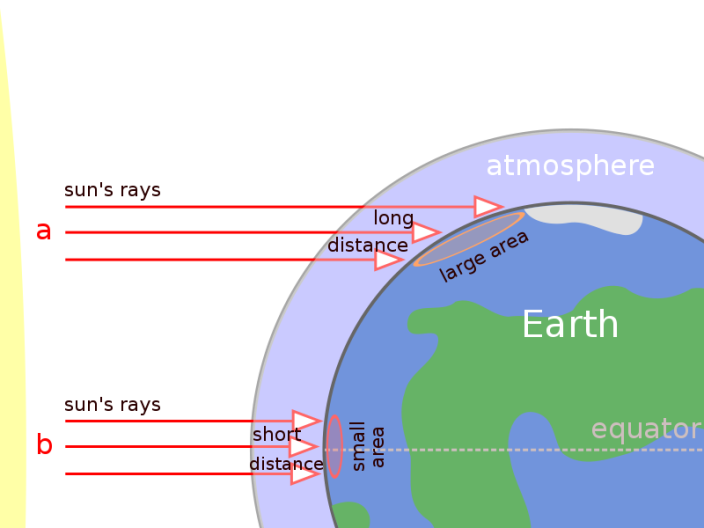Atmosphere
Perpendicular and oblique angles
Image Posted on
Why the polar regions are colder: Effect of the Earth’s shape and atmosphere on incoming solar radiation.
Compared to equatorial regions (b), incoming solar radiation of the polar regions (a) is less intense for two reasons:
- the solar radiation arrives at an oblique angle nearer the poles, so that the energy spreads over a larger surface area, lessening its intensity.
- The radiation travels a longer distance through the atmosphere, which absorbs, scatters and reflects the solar radiation.
Tropical areas (i.e. lower latitudes, nearer the equator) receive solar radiation which is closer to vertical.
The angle of incidence of the rays, combined with the albedo of the surface has also a strong influence on the amount of energy being absorbed (or reflected) at the surface. In the ice-covered polar zones, almost all direct energy from the sun is reflected because it is white and the angle is small. In short, the angle of incidence affects the heating of the surface in 3 different ways: length of atmospheric track, variable flux and variable reflection
- ← Previous
- 1
- 2
